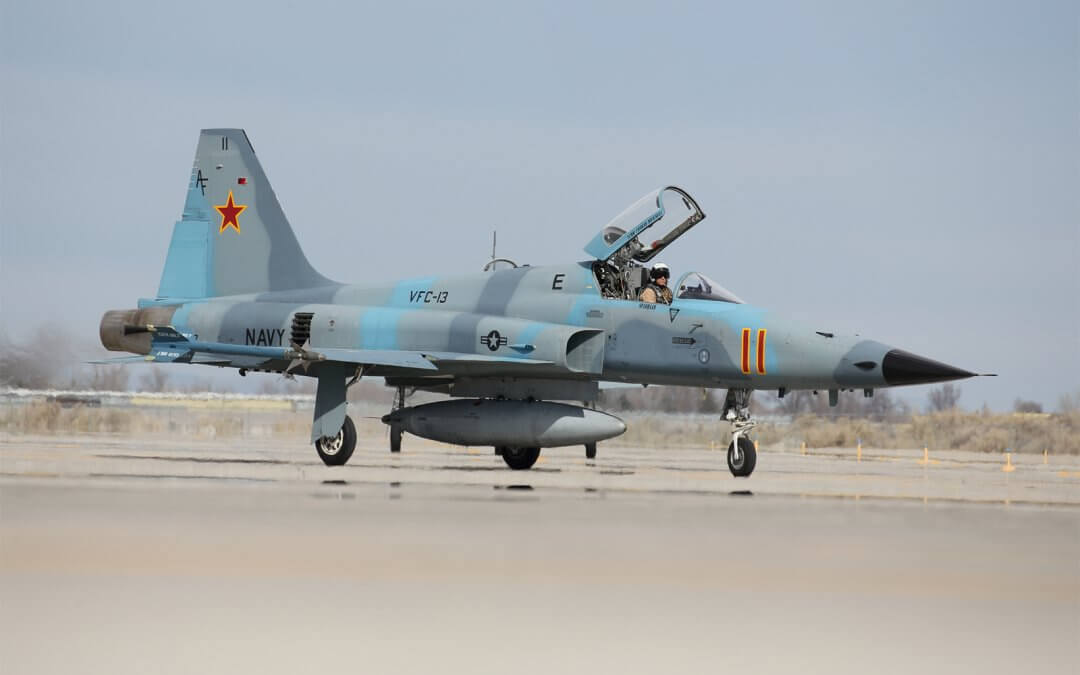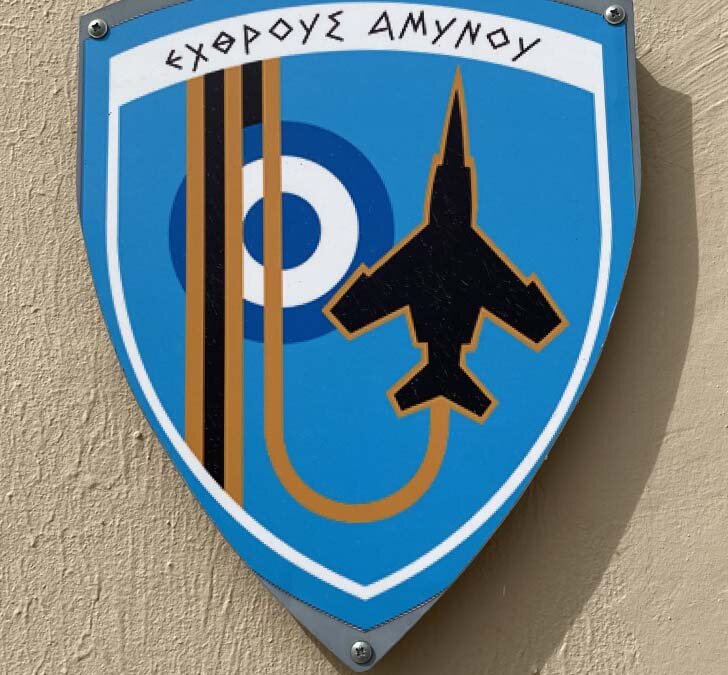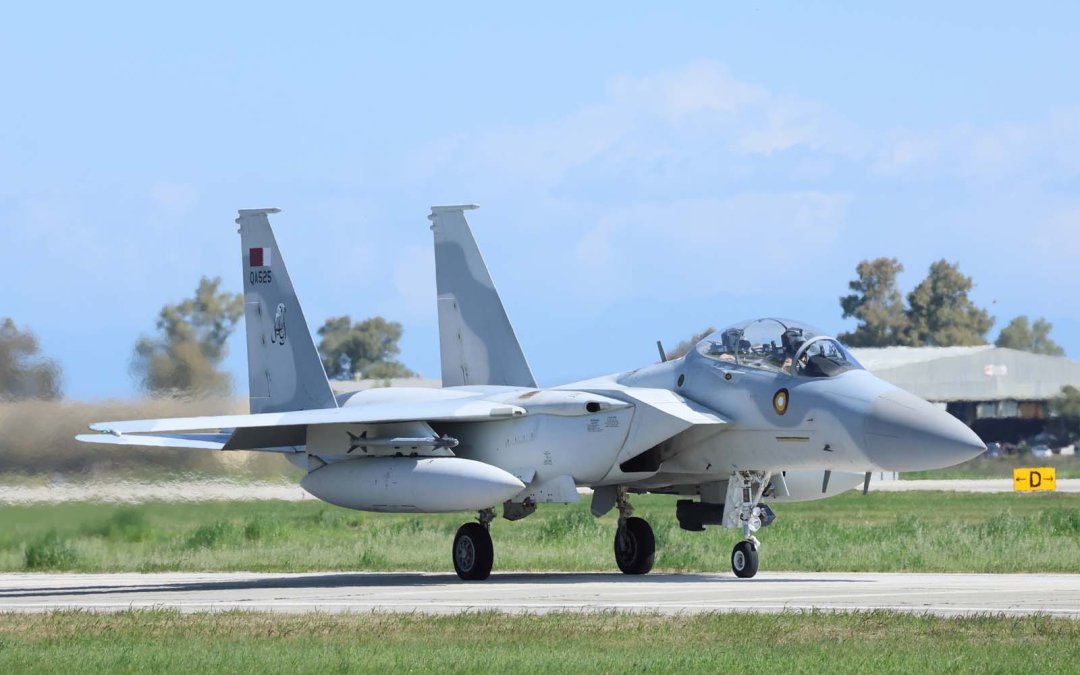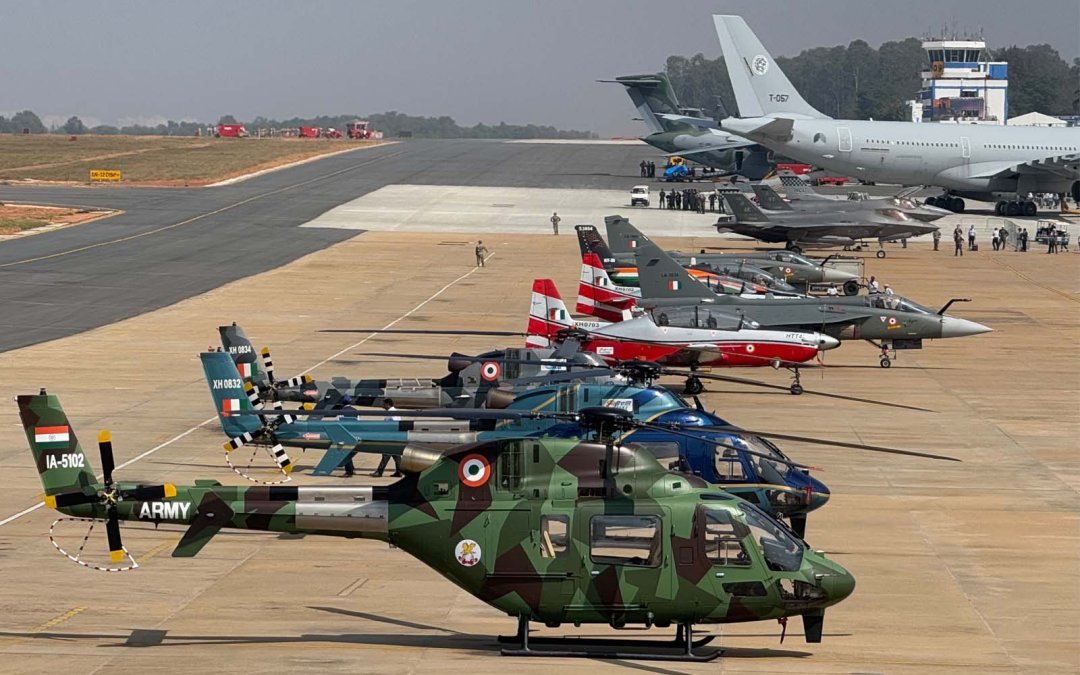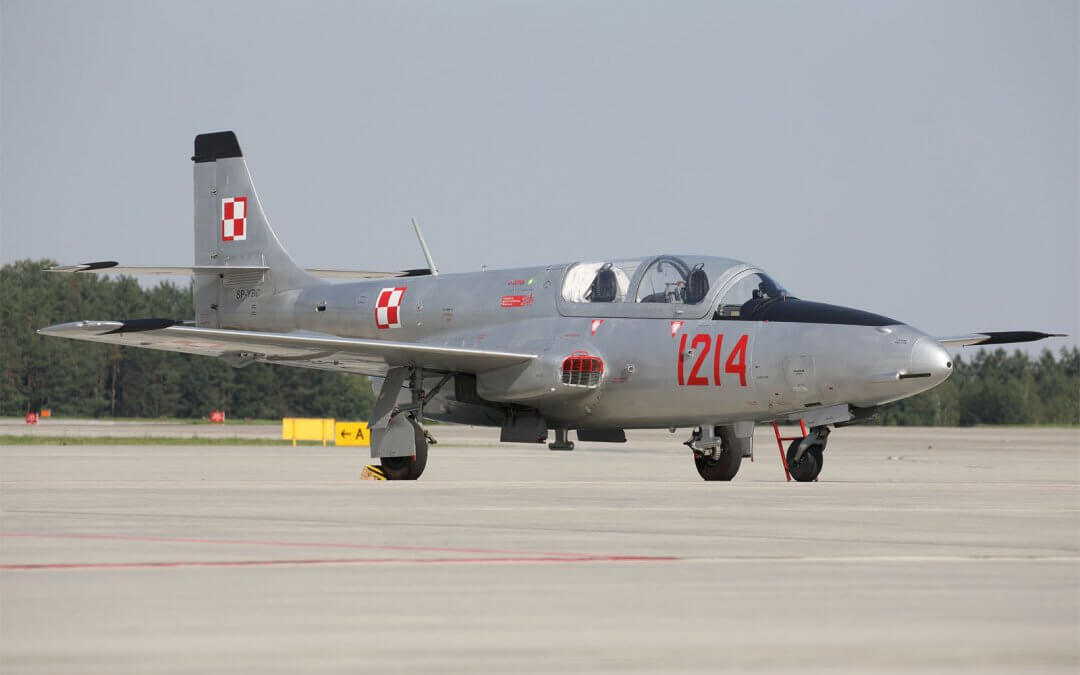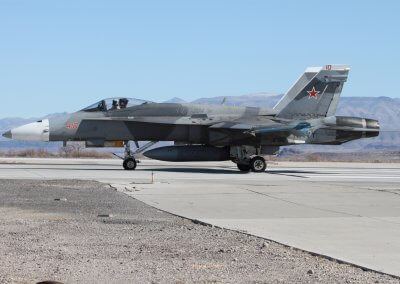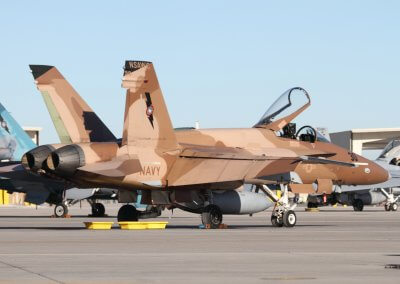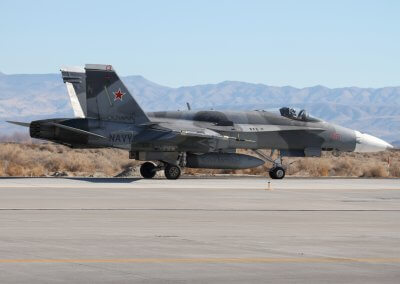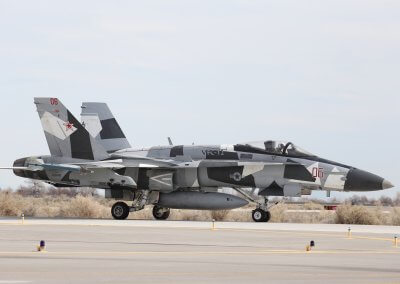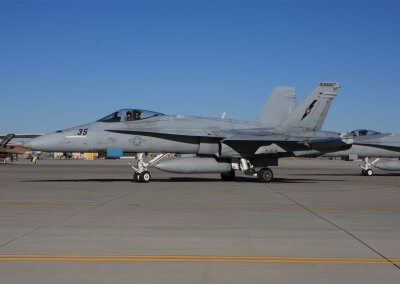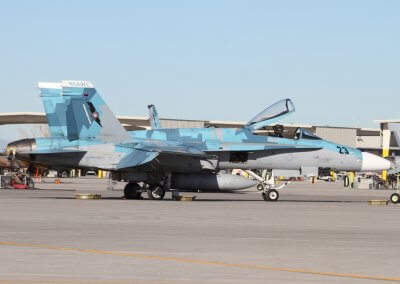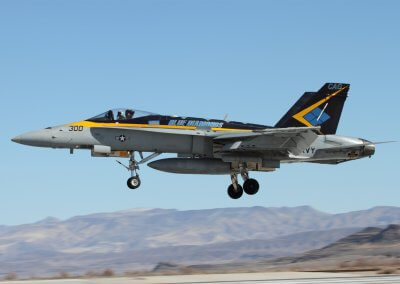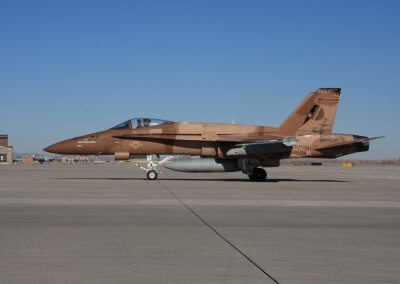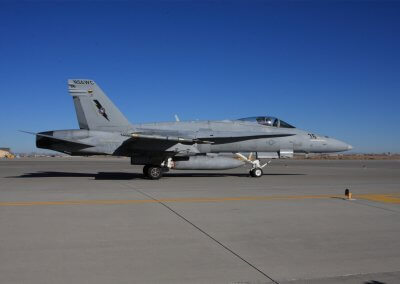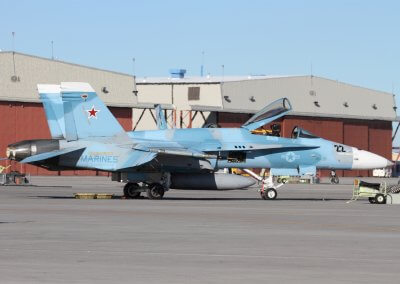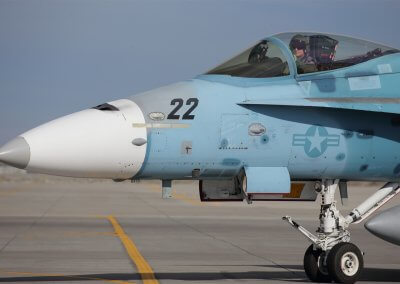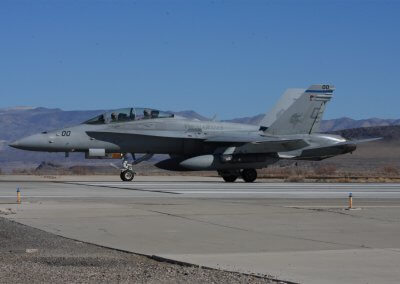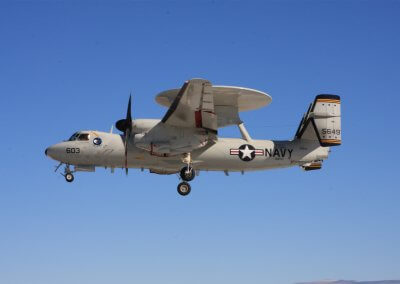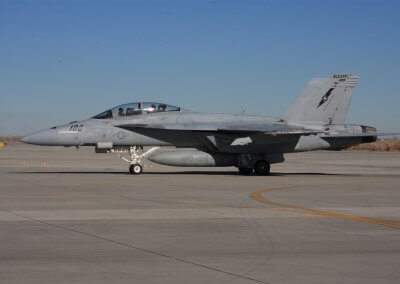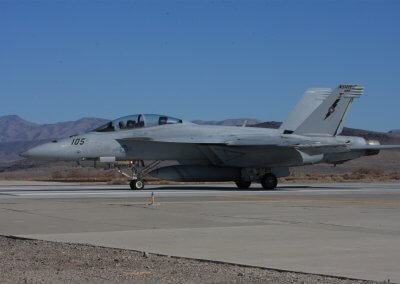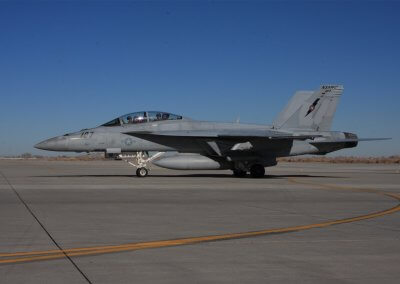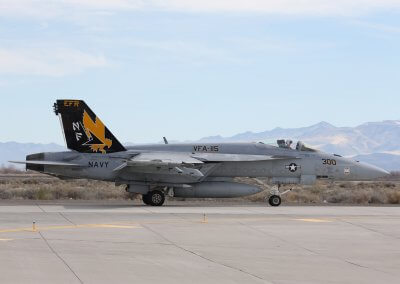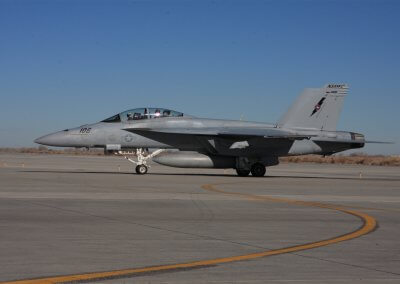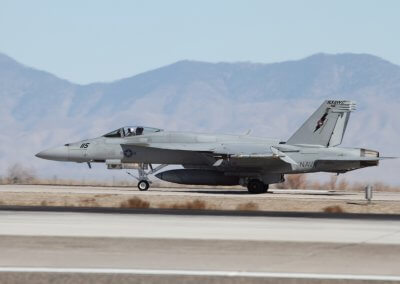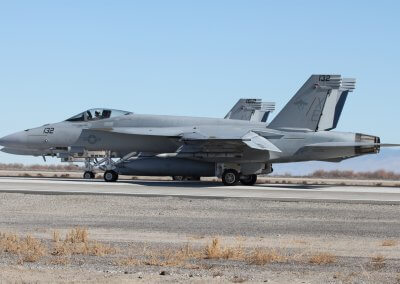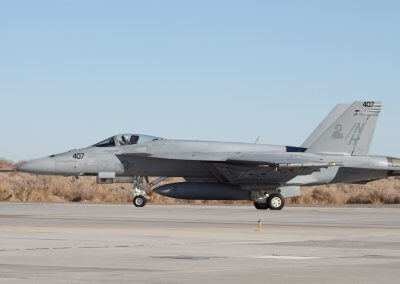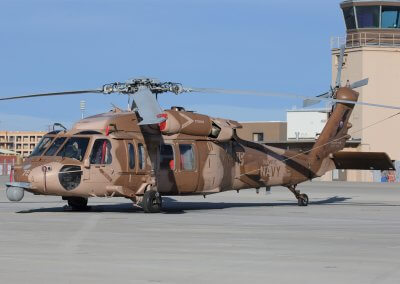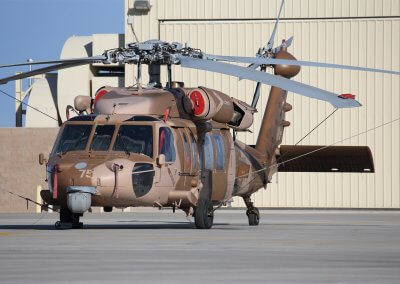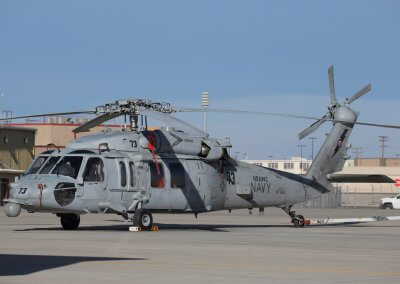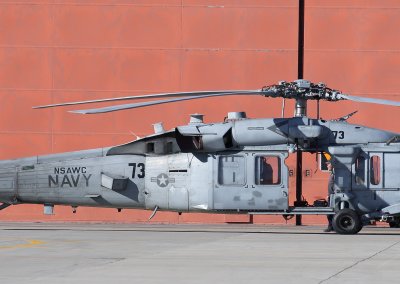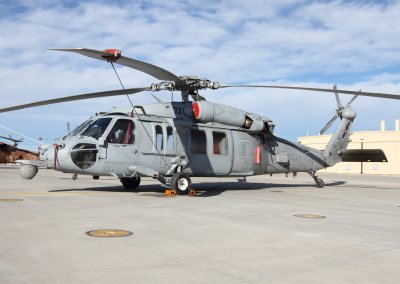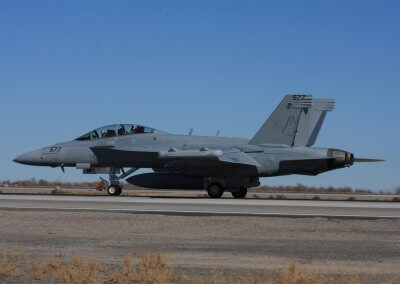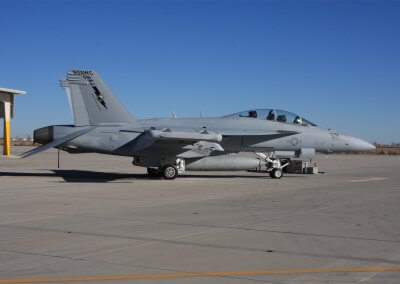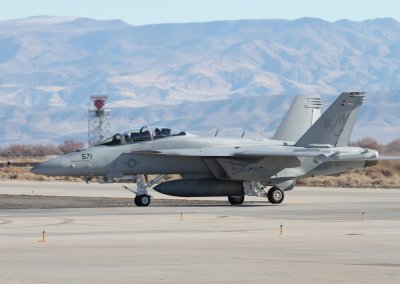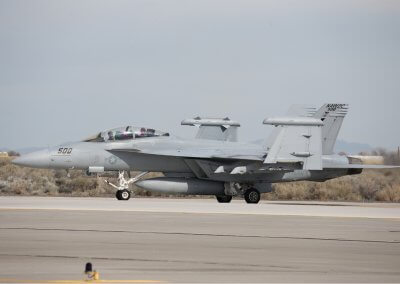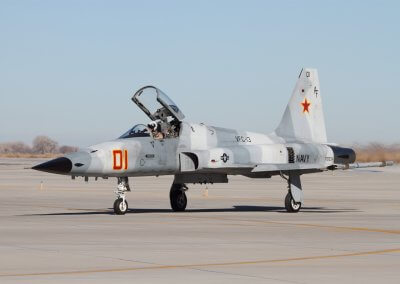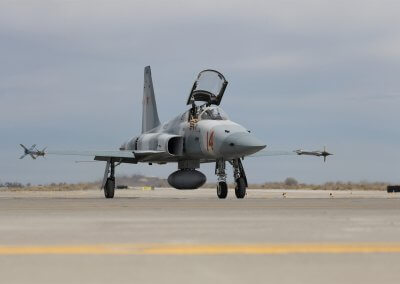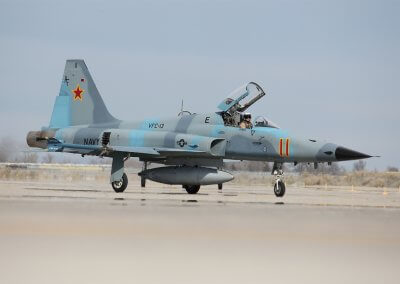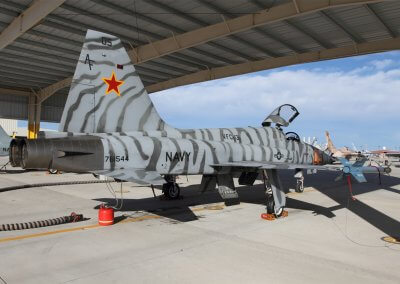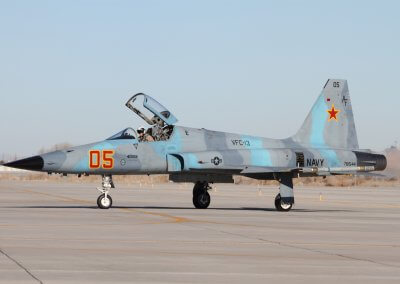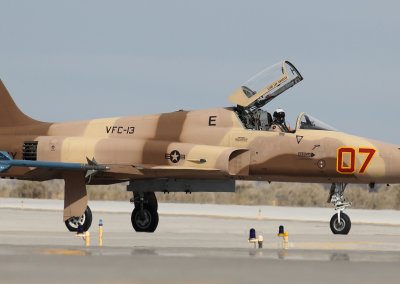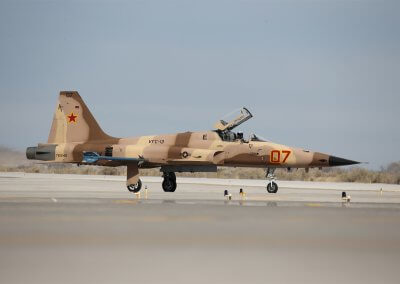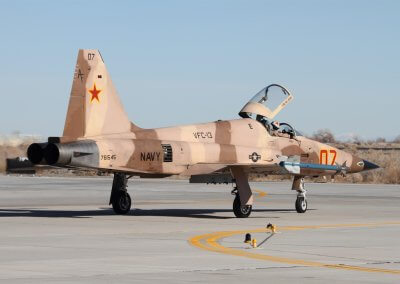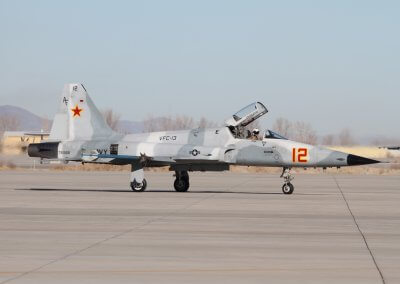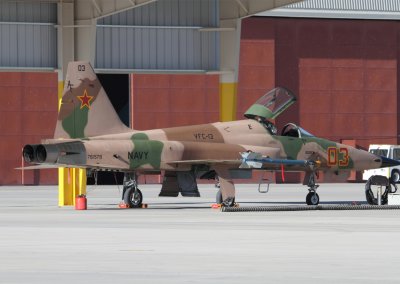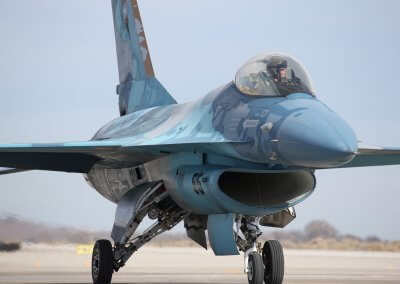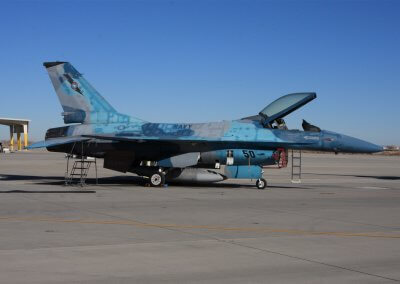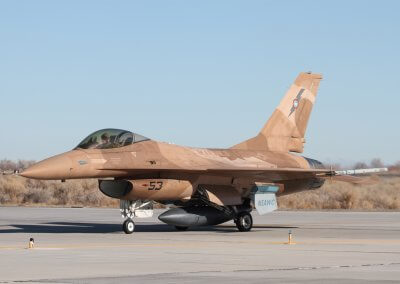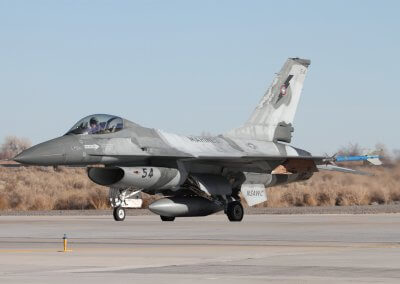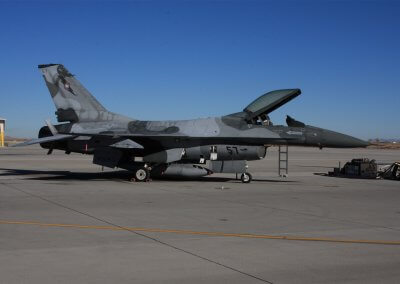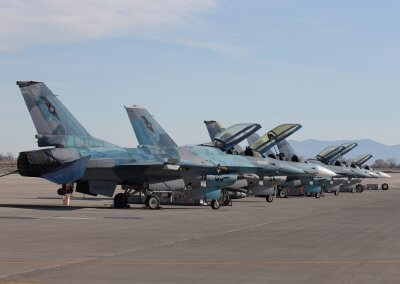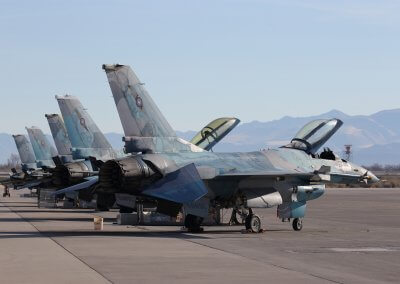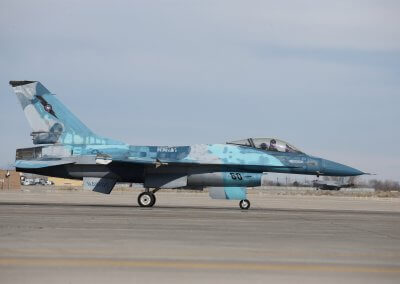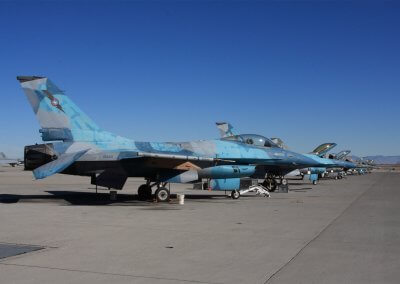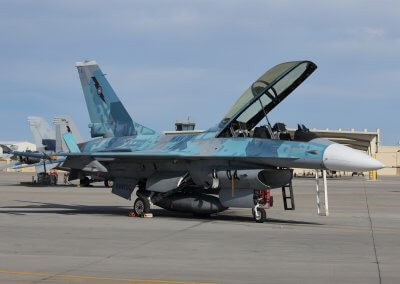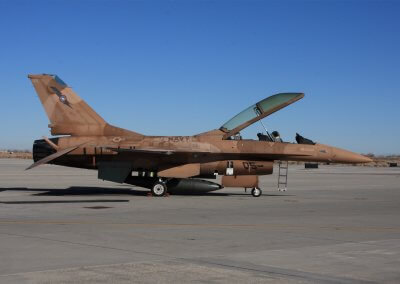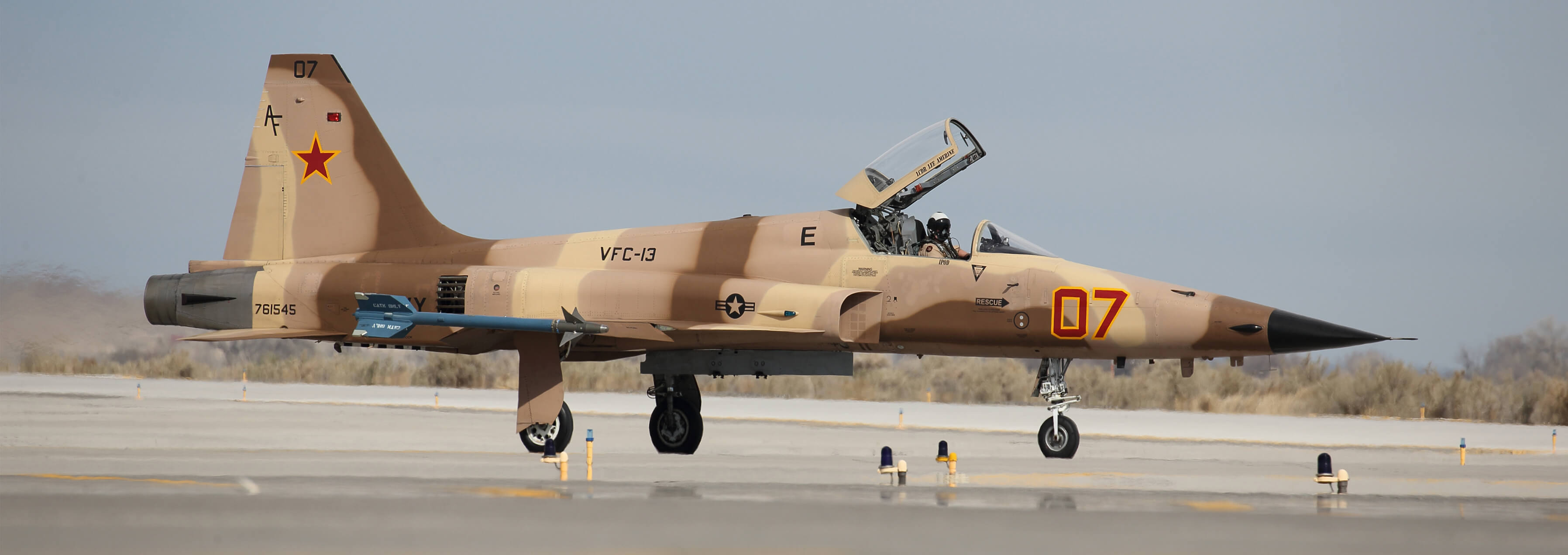
Author & photographer: Ian French
NAS Fallon serves as the US Navy’s premier tactical air warfare training centre and is the only facility where an entire carrier air wing can conduct comprehensive training whilst integrating every element of the wing into realistic battle scenarios. NAS Fallon is located in the Nevada desert and enjoys more than 300 clear flying days per year.
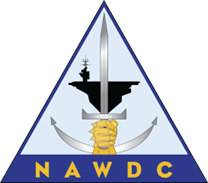
The extensive facilities include four bombing ranges and an electronic warfare range as well as other training facilities. The 14,000-foot runway remains the longest in the US Navy, making NAS Fallon a one-stop training facility unequalled throughout the service.
NAS Fallon traces its origins to 1942, when the Civil Aviation Administration and the Army Air Corps began construction of four airfields in the Nevada desert. As part of the Western Defence Program, initiated to repel an expected Japanese attack on the west coast, runways and lighting systems were built in Winnemucca, Minden, Lovelock and Fallon. As the war in the Pacific developed, the US Navy recognised a need to train its pilots in a realistic environment using all the tactics and weapons currently being developed. Fallon was the Navy’s choice. In 1943, the US Navy assumed control of the two 5,200 foot runways and construction soon began on barracks, hangars, air traffic control facilities and target ranges. In June 1944, Naval Auxiliary Air Station Fallon was commissioned. Training operations reached a peak in the summer of 1945 when an average of 21,000 take-offs and landings were recorded and more than 12,000 flight hours logged at the station.
The airfield’s most sophisticated range, the electronic warfare range, was established in 1967.
In January 1972, the US Navy recognised Fallon’s importance to naval aviation by upgrading the base to a major aviation command, and thus, NAS Fallon was commissioned.
In 1984, the Naval Strike Warfare Centre was established to be the primary authority for integrated strike warfare tactical development and training. It quickly became the “graduate level” training evolution that air wings go through during their inter-deployment training cycle: after completing the four week training course in NAS Fallon, an air wing was ready for combat anywhere in the world.
In 1985, NAS Fallon received a new tool to aid in its aircrews training: the Tactical Aircrew Combat Training System or TACTS. This system provides squadrons, carrier air wings and students from the Naval Strike Warfare Centre with visual, graphic displays of their missions eliminating guess work. Strike Fighter Squadron 127, the “Desert Bogeys” aggressors moved to NAS Fallon in 1987, becoming the air station’s only permanently based squadron. The unit currently operates F/A-18C/D Hornets, F/A-18E/F Super Hornets, E/A-18G Growlers, F-16 Fighting Falcons, E-2 Hawkeyes and MH-60S Seahawk helicopters.
During the 1990s the base continued to expand its role as the pinnacle of Naval Aviation tactical training. A new hangar, ramp and academic building were built in 1995 to accommodate the arrival of Navy Fighter Weapons School (TOPGUN) and Carrier Airborne Early Warning Weapons School (Top Dome) from San Diego to Fallon in early 1996.
In July 1996, The Naval Strike and Air Warfare Centre (NSAWC) was commissioned, combining the functions of TOPGUN, the Carrier Airborne Early Warning Weapons School and the Naval Strike Warfare Centre into one command under a two-star admiral. The training centre has continued to instruct all aspects of tactical integrated air warfare, including air wing training detachments, TOPGUN classes, E-2 Hawkeye mission commander courses, as well as developing advancements in tactics and procedures.
In June 2015, the Naval Strike and Air Warfare Centre was renamed the Naval Aviation Warfighting Development Centre (NAWDC).
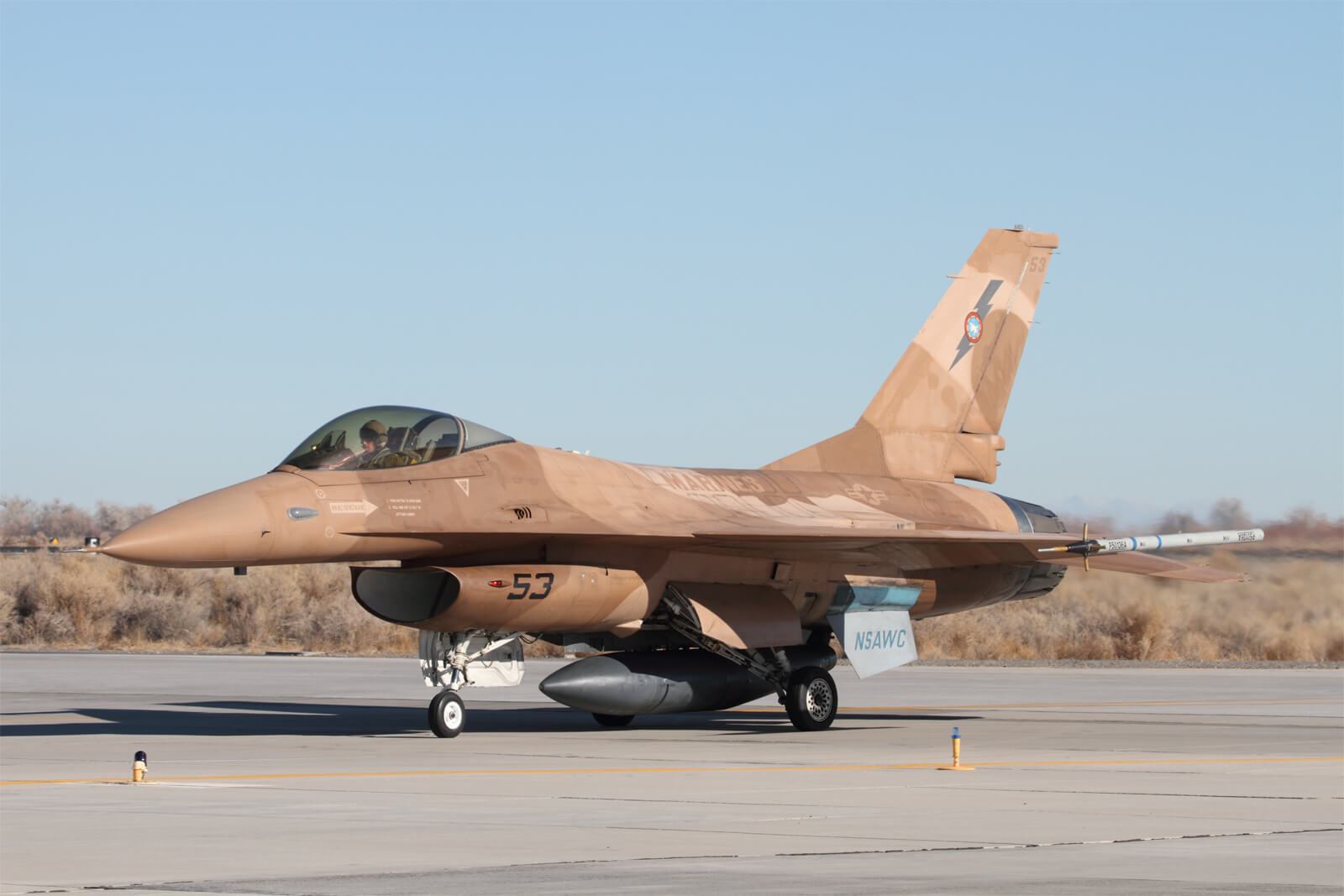
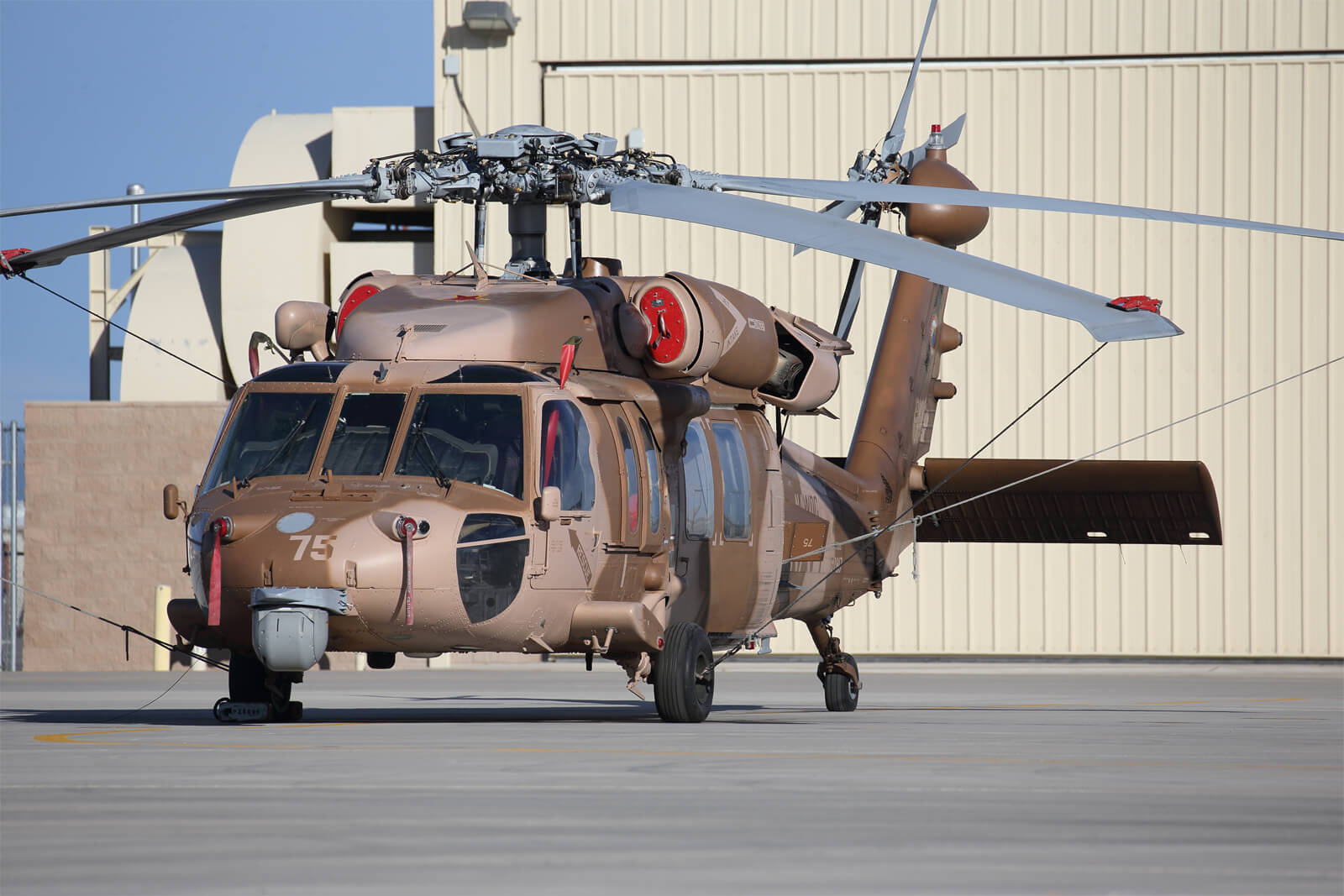
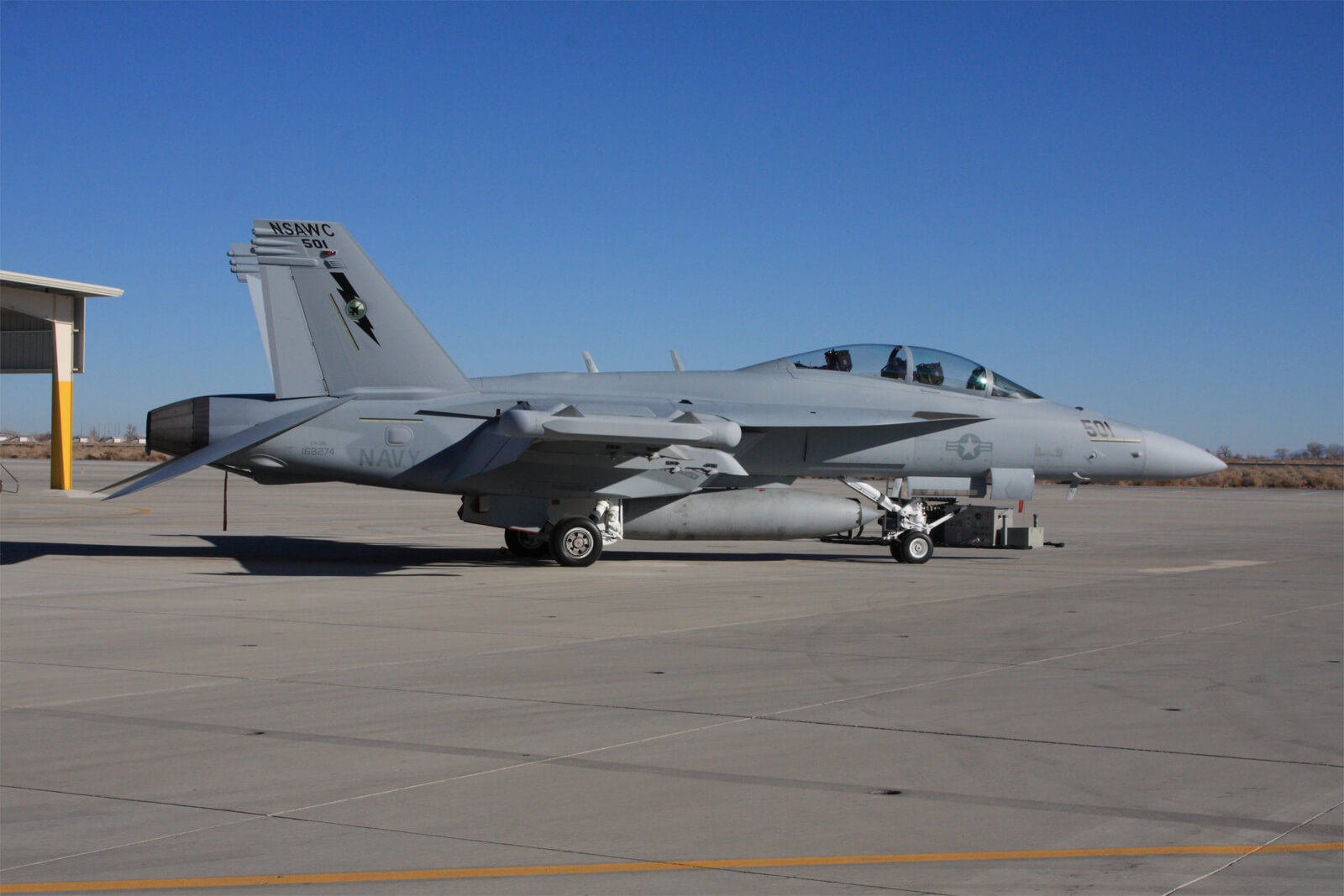
Fighter Squadron Composite 13
The “Fighting Saints” of VFC-13 can trace their origins back to 1946, when VF-753 was commissioned flying F6F-5 “Hellcats.” Today’s squadron was formed in September 1973 at NAS New Orleans during the reorganisation of the US Naval Reserve.
As the demand for west coast adversary services and other fleet support missions increased, the squadron was permanently transferred to NAS Miramar, arriving there in February 1976. Twenty years later, in April 1996, the command relocated to NAS Fallon and made the transition to the F-5E/F Tiger II.
In April 1988, it was recognised that the “Fighting Saints” provided a formidable dissimilar adversary threat and VC-13 was re-designated as Fighter Squadron Composite Thirteen (VFC-13).
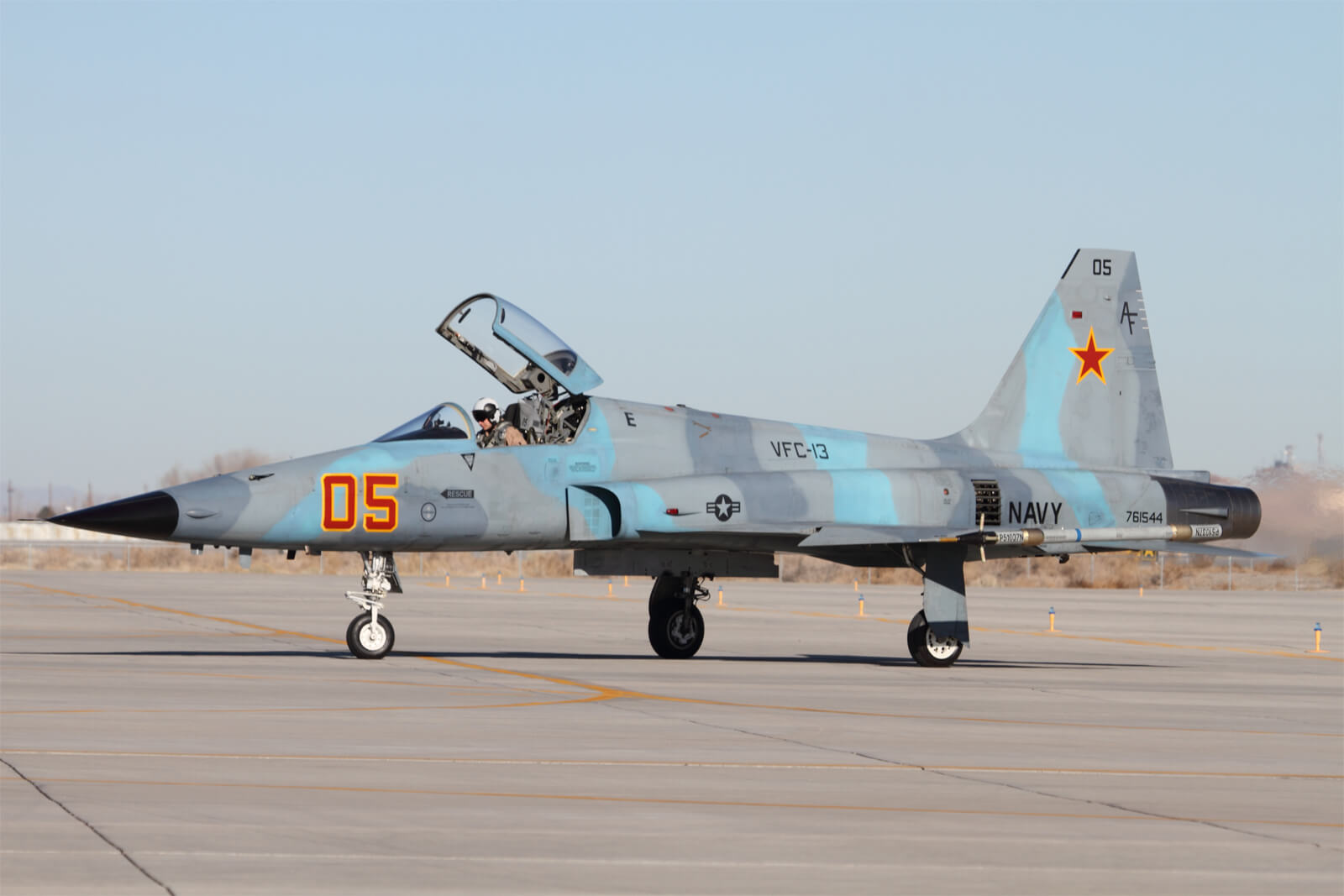
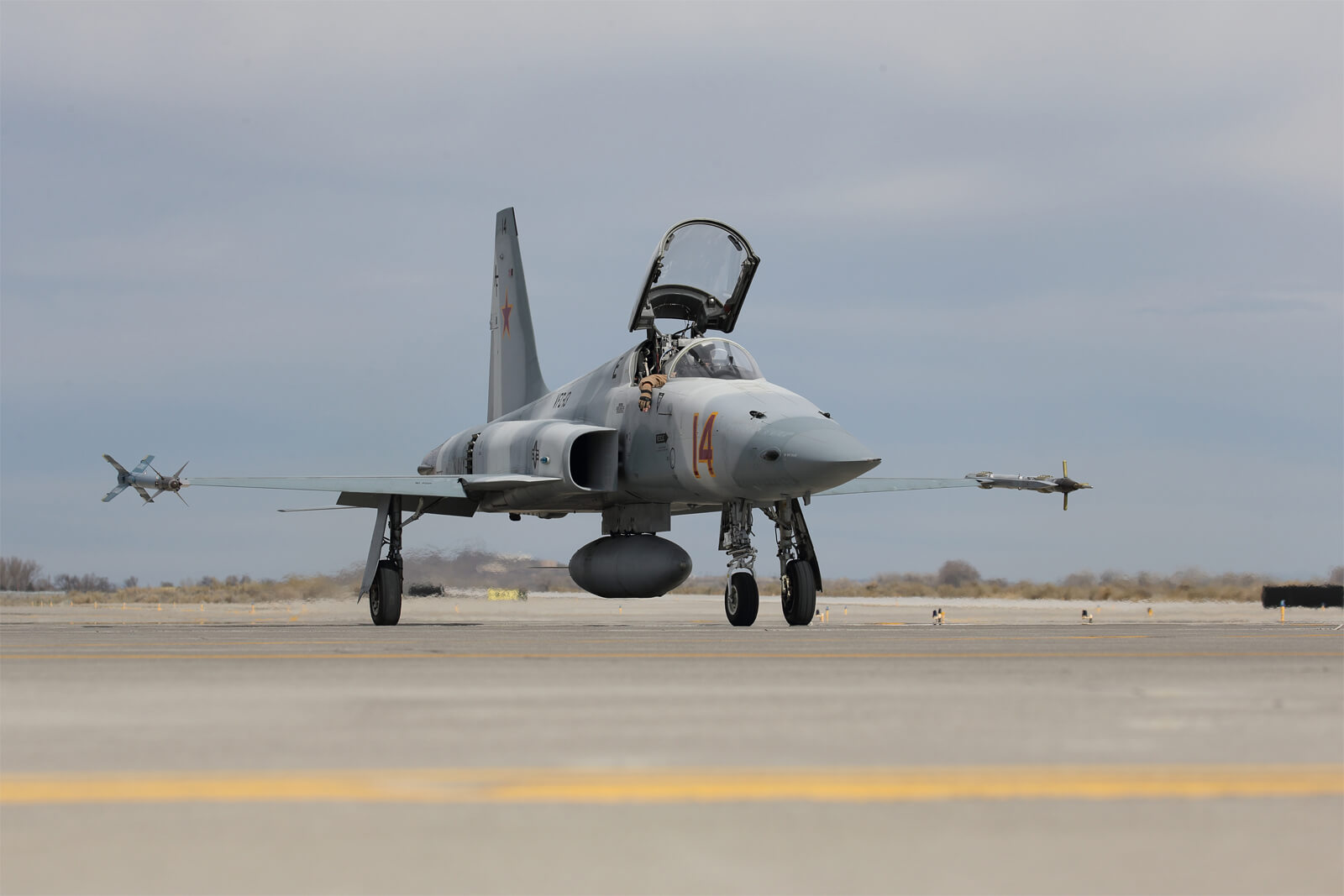
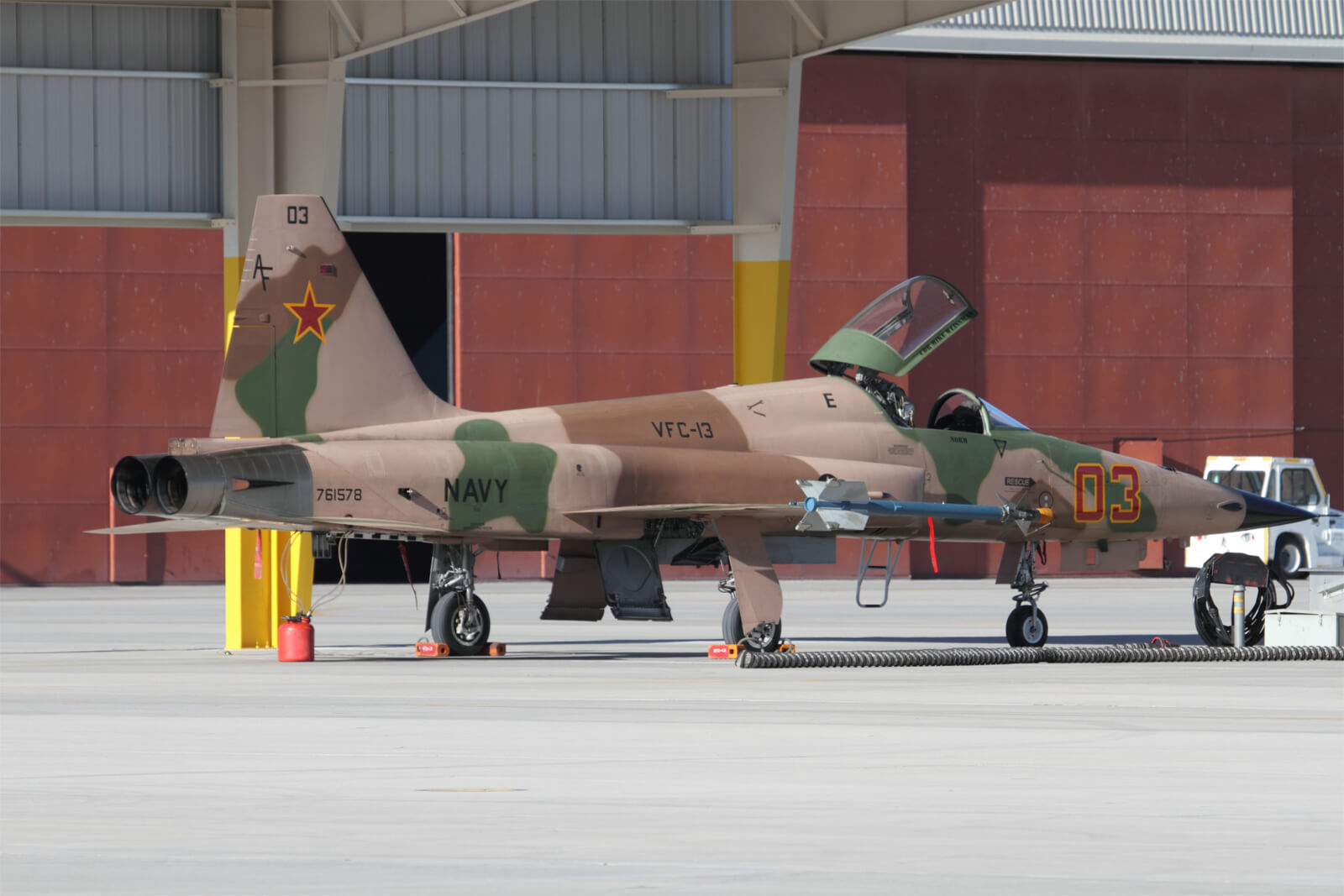
Aviation Press Limited would like to thank the Public Affairs Office, NAS Fallon and Jon Astley for their assistance in producing this article.
Aviation Press Limited owns the copyrights to this article & associated photographs.
